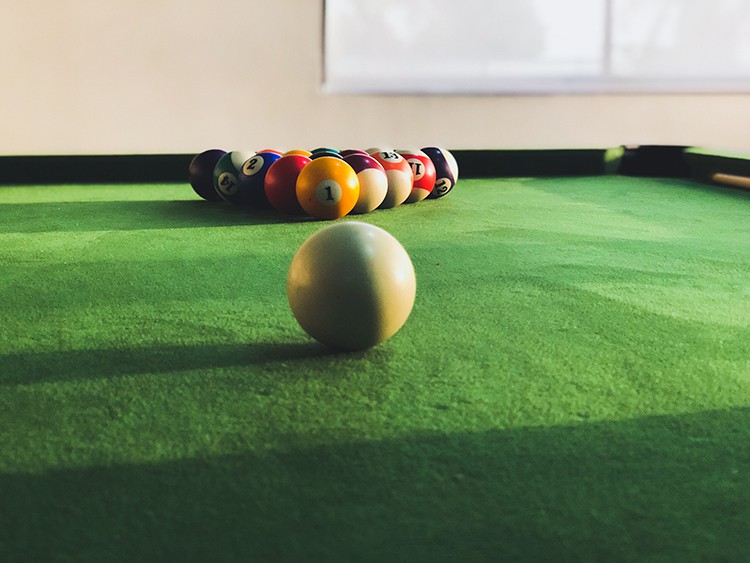Oops. You just knocked the white ball in the pocket while playing pool, and now you and your opponent are trying to figure out what that means. Normally pocketing balls is a good thing, but not so for the white ball.
Pocking the white ball in pool results in a foul, and your opponent gets ball in hand. There are two ways this foul is handled depending on the rules you’re using and the timing of the foul. They will either:
- Be able to either place the white ball anywhere on the table.
- Be able to place the white ball anywhere behind the head string.
We know that executing ball in hand can be a little confusing for new players, so let’s take a closer look at how this particular foul should be handled.
Pocketing the Cue Ball
In pool, the white ball used to drive the other balls into the pockets is called the cue ball. When the cue ball goes into the pocket during your shot, this is considered a foul no matter what rules you’re playing by. Most players and rule books call this a scratch.
- Bar Rules: Your opponent can place the cue ball anywhere they would like behind the head string.
- APA and BCA Rules: Your opponent gets ball in hand UNLESS the cue ball was scratched on break. Then the opponent will have to place the ball behind the head string and make contact with a ball beyond the head string.
Ball in hand is one of the most common ways fouls in pool are handled, but what does that even mean? Let’s take a look.
What Does Ball in Hand Mean?
Ball in hand means that whoever didn’t commit the foul can place the ball anywhere on the playing surface of the pool table.
Most rules allow the player to move the ball as much as they want before they take a shot. As soon as the shot is taken, even if it is a miscue, the player can no longer move the ball.
If the player must place the ball behind the head string, but there are no balls outside of the head string for them to hit, they can ask for the ball nearest the head string to be spotted. Spotting means to place a ball at the foot spot (a dot at the foot of the table at the second diamond).
Ball in hand offers an opponent a serious advantage, which is why it is important not to pocket the cue ball. To learn to break properly (and without scratching), check out our post How to Break in Pool for 5 beginner tips.
What is the Head String?
If you are playing by bar rules or scratched on the break, you’re going to need to know where the head string is. There are a couple of different terms used for this location on a pool table, including:
- In the kitchen
- Behind the second diamond
The head string is located at the second diamond on the side rail at the head of the table. If you drew a line from the second diamond on one side rail to the second diamond on the other side rail, that would be the line you would need to place your ball behind. There is sometimes a spot located on the felt that indicates this location.
But which end is the head of the table? It’s the side of the table that you stand when you break.
Playing by the Rules
While you and your buddy might stretch the rules a little while playing pool because you’re just playing a friendly casual game, this is one rule we recommend upholding.
Scratching essentially removes the ball from play, and it needs to be placed somewhere. If you let the person that scratches the ball put it where they want, they might try scratching all the time for the advantage. The way a scratch is handled is the only reasonable way to handle it.
If you’re looking for more beginner tips, check out our post 11 Billiard Tips Every Beginner Needs to Learn.

